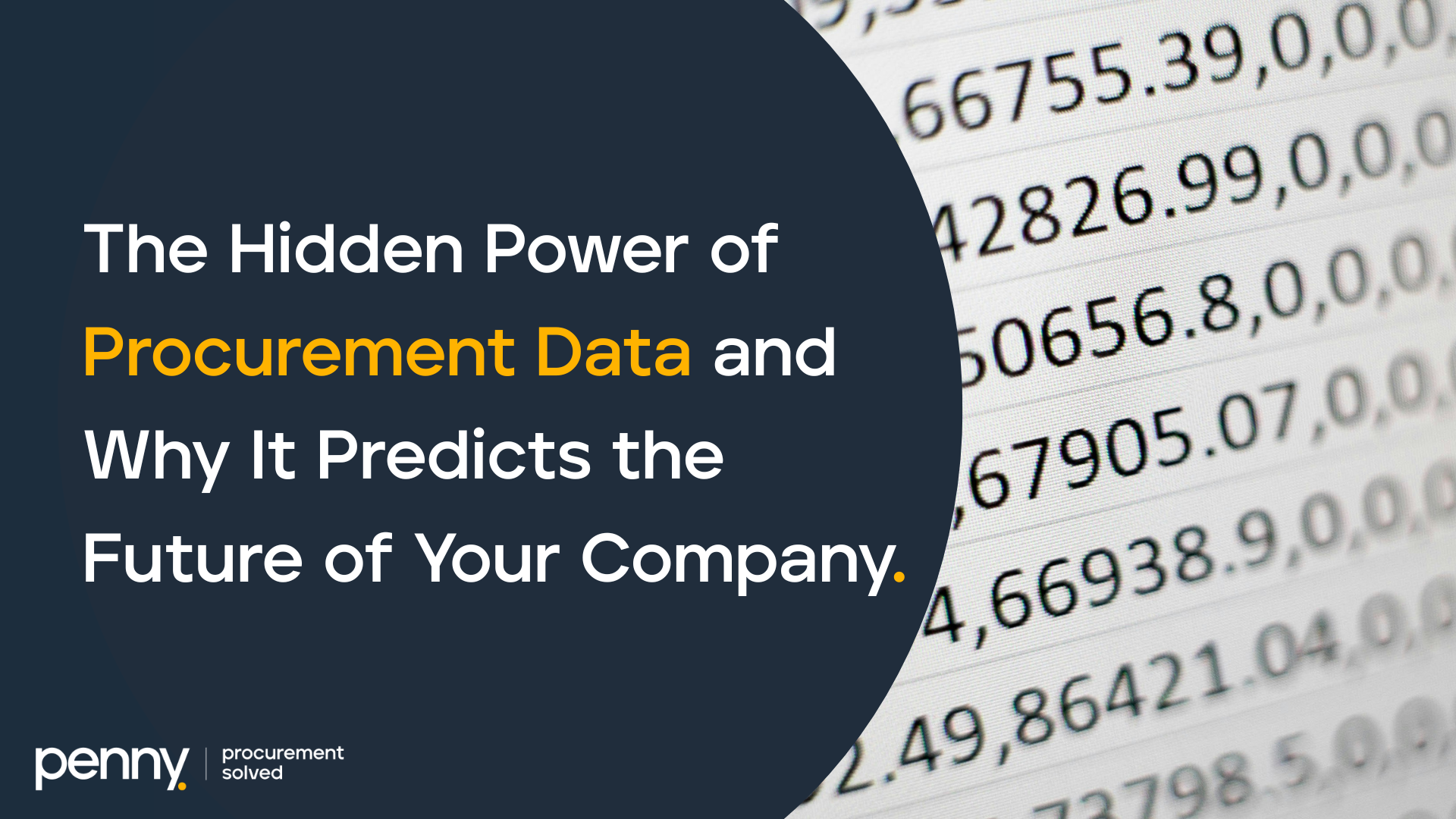Introduction
Artificial intelligence will soon replace those who don’t know how to use it effectively. In procurement, this transformation is led today by Generative Artificial Intelligence (GenAI). This advanced technology will be reshaping how procurement operations are conducted, turning routine tasks into strategic decisions.
This leap forward in technology is doing more than just simplifying work. It dives into vast amounts of data, uncovering essential trends and insights about suppliers. Such a significant shift can be compared to the transition from manual calculations to digital computational power. Yet, with all new technologies, it bring challenges. Ensuring accuracy and careful application of this intelligent tool is crucial.
Now, artificial intelligence, particularly in its generative form, stands as a key tool in procurement. This period marks an important time for professionals in the field to learn, innovate, and succeed with new technological advancements.
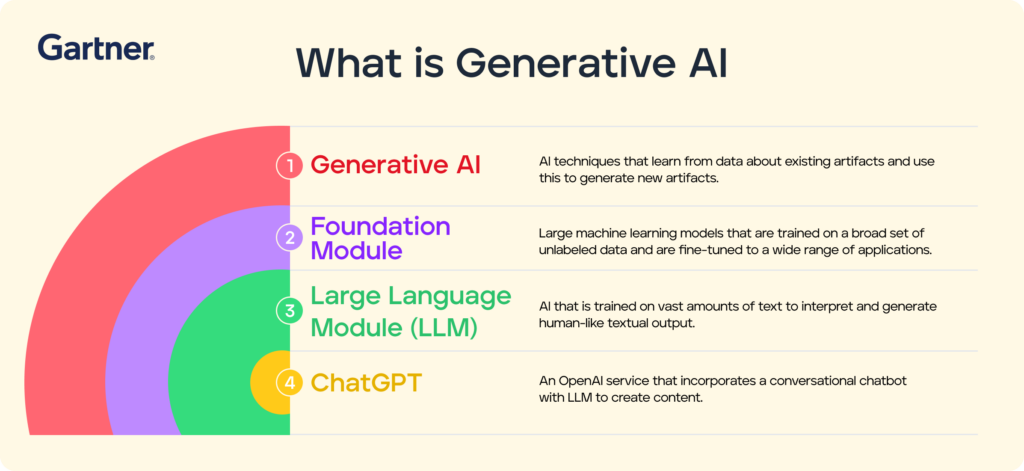
Generative AI: A New Era in Procurement
The landscape of Generative Artificial Intelligence (GenAI) is rapidly evolving, with OpenAI’s ChatGPT launch in November 2022 serving as a watershed moment. This significant development ushered in an era where AI began to significantly influence procurement processes. Within two months, ChatGPT became the first widely used product of its kind, reaching 100 million users, demonstrating the growing acceptance and application of GenAI.
Following ChatGPT’s success, the industry saw notable advancements that further shaped procurement. Salesforce announced Einstein GPT on March 7, 2023, leveraging OpenAI’s models to enhance customer relationship management with AI capabilities. This move underscored the potential of GenAI to revolutionize customer-focused processes, an area closely tied to procurement.
On March 13, OpenAI released GPT-4, which not only offered significant improvements in accuracy but also addressed the issue of AI hallucinations, marking a step forward in reliable and accurate generative models. This directly impacts procurement by offering more dependable tools for data analysis and supplier evaluations.
The rapid pace of GenAI development suggests a future where procurement functions become increasingly intelligent. As McKinsey indicates, “GenAI’s precise impact will depend on a variety of factors, such as the mix and importance of different business functions, as well as the scale of an industry’s revenue.” This insight is particularly relevant to procurement, where the right mix of technology can lead to substantial gains in efficiency and strategic decision-making.
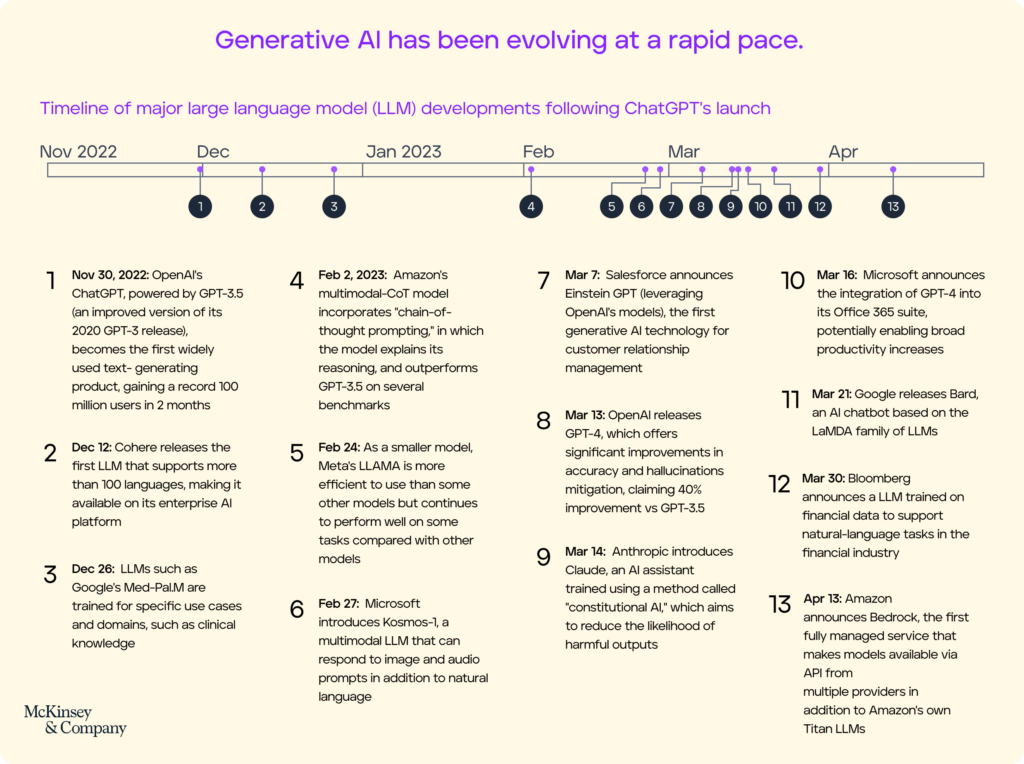
In this new era, procurement is poised to become more proactive, predictive, and personalized. The latest developments, such as the introduction of Personalized GPTs by the CEO of OpenAI at DevDay on November 7, 2023, have indicated a trend towards customization. These advancements make it possible to create custom versions of ChatGPT, combining specific instructions, additional knowledge, and a range of skills. This trend is set to benefit procurement by tailoring solutions to meet the unique needs of individual organizations.
As GenAI continues to advance, it holds the promise of transforming procurement from a tactical necessity to a strategic asset, streamlining operations, and empowering professionals with tools that were once in the realm of science fiction.
GenAI in Action: Transforming Procurement Functions
The realm of procurement is witnessing a transformative wave, propelled by the capabilities of Generative AI. This chapter explores real-world applications where GenAI is not just automating processes but also enabling strategic decision-making and enhancing the overall efficiency of procurement operations. For procurement leaders, understanding which use cases will bring the most value is crucial. Generative AI’s power isn’t just in automation but in ideation and strategy formation. It can analyze multiple data sources, such as real-time market data and emerging innovation trends, to generate prescriptive insights and recommendations for category managers.
For a more comprehensive view of generative AI’s impact in source-to-pay cycles, refer to the illustration below from Deloitte highlighting its highest potential in proactive approaches.
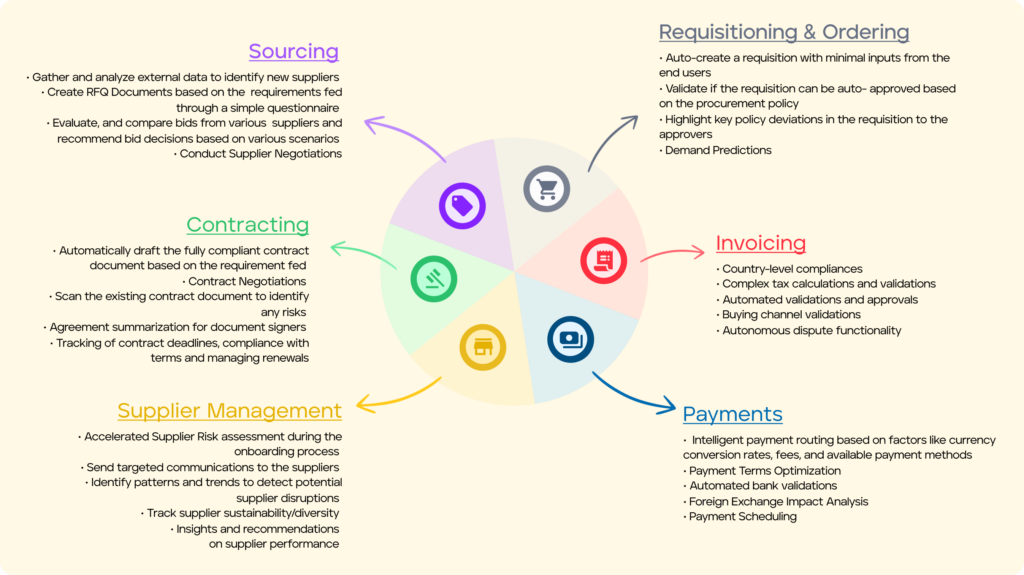
Case Study 1: Strategic Sourcing and Supplier Selection Enhanced by GenAI
Strategic sourcing, the keystone of procurement, is being reimagined through Generative AI. This technology empowers organizations to conduct multifaceted evaluations of suppliers, integrating considerations beyond cost to include quality, reliability, and ethical practices.
Consider a multinational electronics manufacturer sourcing for semiconductors. Implementing GenAI, the firm assesses potential suppliers against a spectrum of data: delivery accuracy, financial stability, geopolitical risks, and sustainability practices. The system scrutinizes global data, identifying suppliers who can deliver innovation and value, beyond mere cost savings.
The ROI of GenAI in procurement is extensive. It’s not just about cutting expenses; it’s about enriched decision-making leading to operational efficiency and robust supply chains. Implementing it might initially aim for a 5% reduction in COGS, but the broader impact on supply chain resilience can lead to far greater savings, especially when avoiding potential disruptions.
According to ESI ThoughtLab’s study, co-sponsored by Deloitte, high ROI achievers in AI adoption — often seeing a 4.3% return — have comprehensive practices across data management and security. They leverage GenAI not just for sporadic tasks but integrate it into their core processes, including low-value yet high-volume sourcing events. GenAI automates these routine procurements, streamlining the entire process and freeing human resources for more complex tasks.
Moreover, GenAI is pivotal in annual supplier negotiations, automating data collection and analysis to provide procurement teams with actionable insights. It can predict cost fluctuations and suggest the best times to negotiate, potentially locking in prices before market shifts. By doing so, organizations ensure they are not only reacting to market forces but anticipating and strategically planning for them.
GenAI’s impact on strategic sourcing is profound. It not only transforms how procurement professionals work but also redefines the strategic value they bring to their organizations. With GenAI, procurement transcends traditional boundaries, becoming a dynamic force that drives innovation, safeguards against market volatility, and delivers sustainable competitive advantage.
Case Study 2: Contract Management Evolution – From Digital Proficiency to GenAI Mastery
As businesses embark on transformative journeys into GenAI-driven contract management, their traditional digital frameworks has to undergo some radical changes. This shift may introduce dynamic, responsive ecosystems where contracts evolve from static documents to adaptive tools that actively engage with the market’s pulse.
In this new paradigm, predictive analytics is set to play a central role, reshaping contracts to be proactive rather than reactive. These analytics predict market trends and suggest terms that flexibly adjust to the global economic landscape, turning contracts into living, breathing entities attuned to market conditions.
Integrated risk management becomes a cornerstone of the strategy for these companies. It monitors and responds to geopolitical shifts and economic indicators, fine-tuning contract terms in real-time to safeguard global sourcing strategies. This ensures that procurement processes are not just efficient but also resilient to external pressures.
GenAI taps into the wealth of a company’s historical contractual data, extracting invaluable insights. These insights inform the creation of new contracts, aligning them with both time-tested strategies and emerging market opportunities. The depth and breadth of data utilization are unprecedented, offering a strategic advantage that only a sophisticated AI system can provide.
Furthermore, intelligent automation revolutionizes routine contract processes. Standard contracts are automated for efficiency, while complex agreements, particularly those involving sensitive intellectual property, are crafted with a combination of AI-driven insights and human expertise. This hybrid approach ensures that contracts are efficient, standardized, and strategically nuanced.
The journey with GenAI in contract management is multifaceted and continually evolving:
- Request Analysis Phase: GenAI conducts an exhaustive, multi-layered analysis of contract requests, ensuring a comprehensive understanding and preparation.
- Automated Drafting Stage: The drafting process transforms from generic templates to nuanced, strategically-oriented compositions, reflecting the specific needs of each agreement.
- Strategic Negotiation Preparation: Negotiations take on a new dimension, powered by AI-driven preparations, turning the process into a strategic and data-informed endeavor.
- Adaptive Execution and Monitoring: The execution of contracts becomes adaptive, with real-time adjustments ensuring ongoing relevance and compliance.
- Ongoing Optimization and Feedback Loop: Performance data from executed contracts feed back into the system, creating a continuous improvement loop for future contracts.
As we move forward, we can notice that in a world where efficiency is not just an option but a necessity, GenAI in contract management isn’t just a tool—it’s a game-changer. It transforms legal teams into strategists, compliance into a competitive edge, and supply chain operations into a masterclass in efficiency and market reactivity. It’s not just about doing things better; it’s about doing better things.
Case Study 3: Risk Management and Compliance
GenAI has ushered in a revolutionary approach to risk management and compliance in procurement, markedly different from traditional AI applications. It has empowered procurement teams with the ability to conduct comprehensive risk assessments. By analyzing supplier financial health, ethical sourcing credentials, and geopolitical risks, procurement can anticipate disruptions. For example, in the volatile market of rare earth metals, GenAI’s predictive models enable companies to identify alternative suppliers and materials proactively, effectively sidestepping potential supply bottlenecks.
Besides, GenAI systems ensure real-time regulatory compliance by automatically updating workflows in line with current laws. This proactive automation extends across all contracts and supplier agreements, integrating the latest in data protection, labor laws, and more, thus safeguarding against the high costs and reputational damage of non-compliance.
In addition to this, offering operational transparency, GenAI aids in identifying inefficiencies and potential risks within transactional data, bolstering decision-making, and enhancing the integrity of procurement operations. It also contributes to strategic planning by forecasting market trends and regulatory shifts, allowing procurement strategies to evolve in anticipation of future changes, maintaining competitive edge and supply chain resilience.
It’s worth noting that the ROI from GenAI is distinct from traditional AI applications in its depth and reach. McKinsey’s data indicates that GenAI adopters have seen a reduction in logistics costs by 15%, inventory levels by 35%, and an increase in service levels by 65%, compared to competitors using basic AI tools. These figures underscore GenAI’s comprehensive impact, which goes beyond cost-saving to drive strategic growth and innovation in procurement.
In essence, GenAI stands as a significant evolution from AI, transforming risk management and compliance into areas of strategic foresight and proactive action. It’s not just about doing things better but about doing better things — identifying new opportunities, navigating risks more effectively, and setting new standards in procurement excellence.
Case Study 4: Augmented Analytics in Procurement
In the evolving narrative of procurement innovation, augmented analytics, powered by Generative AI, has emerged as a pivotal chapter. This advanced technology has redefined the approach to procurement analytics, transforming it from a mere data processing task to a strategic decision-making tool.
Transforming Data Processing:
GenAI has revolutionized data processing in procurement. By crunching large data sets, it processes complex scenario-based results, drastically reducing the need for manual intervention and complex analyses. This streamlined approach to data processing not only saves time but also increases the accuracy and relevance of the insights generated, enabling procurement teams to make more informed decisions. It also provides actionable insights by analyzing historical trends, demand profiles, and supplier performance. This enables procurement teams to make well-informed decisions that align with their strategic goals, including optimizing cost management, which is particularly crucial given the rise in inflation and its impact on procurement organizations.
Besides, one of the most significant areas where GenAI adds value is in proactive risk management and cost optimization. It empowers organizations with instant access to accurate information, vital for mitigating and managing risk. The tool’s ability to continuously monitor external risk factors and perform advanced analytics to predict and prescribe risk KPIs is crucial in today’s volatile market environment.
This is said, incorporating GenAI into data analytics enhances its capabilities significantly as it stands out for its ability to generate original data and interpret existing data with minimal human intervention, thereby bolstering data analytics processes. Notable benefits include:
- Contextual understanding and explanations for data outputs by GenAI models.
- Natural language processing for both queries and results, making data analysis more user-friendly.
- Compatibility with unstructured data, widening the scope of data inputs and analytic outputs.
- Large language models enabling automation and real-time analysis at a large scale.
- The ability to recognize intricate data patterns and relationships, valuable for predictive analytics and quality assurance.
For effective use of GenAI in data analytics within procurement, it is recommended to:
- Integrate GenAI as a part of the overall enterprise data strategy.
- Address challenges like security, bias, and accuracy proactively.
- Apply GenAI to specific components of the analytics cycle, particularly in areas that directly impact business metrics.
By leveraging the predictive and analytical prowess of GenAI, procurement teams can navigate the complexities of today’s market more effectively and make decisions that drive value and efficiency.
Case Study 5: Conversational Procurement
Chatbots in procurement have come a long way since their inception. The first prototypes, like the one I built in 2017, were basic query-response systems. However, the advent of GenAI has facilitated the move towards more sophisticated conversational platforms. These advanced chatbots are now capable of automated, personalized interactions, much like human conversations, across various mediums including emails, calls, and procurement systems.
Driving Value in Procurement:
Conversational AI in procurement through chatbots or similar tools drive value in numerous ways:
- Automated Interactions: Imagine a user wanting to know the status of a specific order. Traditionally, this would involve navigating through a maze of procurement system menus (and probably getting lost along the way). With a Conversational Interface, it’s as simple as asking, “What’s the status of my order for item X?” and getting an instant response.
- Training and Guidelines: If a user is unclear about procurement policies, they might traditionally spend hours digging through documents or waiting for a human response. A chatbot, for instance, can instantly provide the relevant policy information, making it seem like it majored in Procurement Policy at AI University.
- User-Friendly & Guided Buying Experience: Consider a user needing to purchase a new laptop. In the pre-GenAI era, this might involve a lengthy process of searching through catalogs. A GenAI enabled-chatbot can swiftly recommend the best options based on the user’s needs, almost like a personal shopping assistant who doesn’t need a lunch break.
- Proactive Alerts: Instead of being caught off-guard by supply disruptions, Conversational Interfaces can proactively alert users via their communication tools like Teams, Slack, WhatsApp etc.. This is like having a psychic assistant who warns you about future problems, except it’s all data-driven and less mystical.
- Real-Time Decision Support: For complex queries like identifying running RFQs in a specific category with multiple bids, users traditionally might click around 30 times in the system, wondering if there’s a hidden shortcut. With a GenAI enabled-chatbot, it’s as simple as asking, “Show me all running RFQs for packaging with supplier ABC closing this month with more than five bids,” and voilà, the information is presented without any digital gymnastics.
- Multi-Channel and Multi-Language Support: Chatbots offer the convenience of interacting in various languages across multiple platforms. It’s like having a multilingual friend who’s always available, whether you’re on your phone, laptop, or smartwatch, ready to chat about procurement in any language you choose.
Impact of Custom GPT Models:
The recent OpenAI keynote introducing Custom GPT models takes this a step further. These models can be trained to understand and emulate the specific language and processes of an organization, making chatbots even more efficient and context-aware. This advancement is pivotal in enhancing chatbot functionalities for supplier interactions, order placements, contract management, and providing comprehensive support and analytics in procurement.
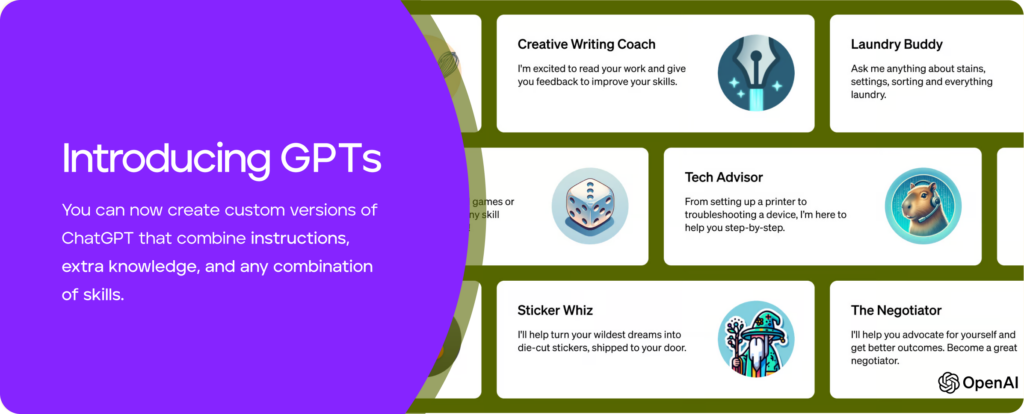
The ROI from these advanced Conversational Platforms is significant. They not only automate routine tasks, leading to operational efficiency, but also provide real-time data and insights for informed decision-making. The ability to handle numerous inquiries simultaneously ensures consistency and scalability, further driving down costs and improving the overall procurement process.
In summary, the evolution of chatbots in procurement, especially with the introduction of Custom GPT models, represents a leap towards more interactive, intelligent, and efficient procurement processes. These advancements enable procurement teams to focus on strategic tasks, ultimately contributing to better decision-making and enhanced productivity.
AI Hallucinations and Procurement: Understanding the Risks
After exploring various use cases of AI in procurement, it’s crucial to address an important aspect often overlooked: AI hallucinations. This term might sound like science fiction, but it’s a very real phenomenon in the world of AI and machine learning. My interest in this topic was piqued after watching an interview with Iyad Aldalooj, CEO and Founder of Penny, who provided insightful perspectives on AI hallucinations (watch the interview here).
Explanation of AI Hallucinations:
AI hallucinations refer to situations where AI systems generate false or misleading information. This can occur due to various reasons, such as biases in the training data, overfitting, or the AI model interpreting the input data in unintended ways. In procurement, where decisions are increasingly data-driven and reliant on AI algorithms, understanding and mitigating the risks of AI hallucinations is essential.

Potential Risks and Impacts on Decision-Making:
In the context of procurement, AI hallucinations can lead to several potential risks:
- Misinformation in Supplier Evaluation: AI systems might incorrectly assess a supplier’s reliability or performance based on skewed or incomplete data, leading to misguided procurement decisions.
- Faulty Market Analysis: GenAI could generate inaccurate market predictions or trend analyses, resulting in procurement strategies that are out of sync with actual market conditions.
- Inaccurate Spend Analysis: AI hallucinations might lead to erroneous conclusions in spend analysis, affecting budgeting and financial planning.
- Contract Risks: AI-driven contract analysis tools might overlook crucial legal clauses or misinterpret contract terms, potentially exposing the organization to legal risks.
Emphasizing the ‘Trust and Verify‘ Principle:
In addressing these challenges, it’s essential to embrace the principle of “Trust and Verify.” This concept underscores the importance of not blindly relying on AI-generated data and insights, but rather using them as tools to assist and augment the capabilities of procurement leaders.
Procurement professionals should verify AI recommendations, maintain oversight on GenAI systems, and foster a collaborative approach where AI tools and human expertise complement each other. They should also stay informed about the latest advancements in AI and machine learning to understand how these can be leveraged effectively and safely in procurement.
By adhering to the “Trust and Verify” principle, procurement leaders can harness the power of GenAI while mitigating the risks associated with AI hallucinations. This ensures that AI serves as a valuable assistant, augmenting human decision-making and enhancing the overall strategic impact of procurement functions. AI, for now, must be viewed as an assistant to procurement leaders, rather than a replacement, ensuring that decisions are made with a combination of AI efficiency and human expertise.
Mitigating Risks: Ensuring Reliable AI Applications
Building on our exploration of GenAI in procurement, particularly the phenomenon of AI hallucinations, it’s essential to discuss strategies to mitigate these risks. Ensuring the reliability of AI applications in procurement is paramount for maintaining both operational integrity and strategic effectiveness.
Strategies for Minimizing AI Hallucination Risks:
To mitigate the risk of AI hallucinations in procurement, several strategies can be employed:
- Diverse and Quality Data: Ensure that the AI systems are trained on diverse, high-quality datasets that truly represent the varied scenarios in procurement. This helps in reducing biases and overfitting, which are common causes of AI hallucinations.
- Continuous Monitoring and Updating: Regularly monitor GneAI outputs for accuracy and relevance. Update the AI models periodically to reflect the latest market trends, procurement practices, and regulatory changes.
- Incorporate Feedback Loops: Implement feedback mechanisms where human users can report anomalies or inaccuracies in AI-generated recommendations or insights. This feedback can be used to fine-tune the AI models continuously.
The Role of Human Oversight and Validation:
Human oversight in AI applications is not just a fail-safe but an integral part of the AI ecosystem in procurement. Procurement professionals should:
- Validate GenAI Recommendations: Use AI as a tool for assistance and not as the sole decision-maker. Human expertise should be employed to validate and contextualize AI-generated insights.
- Ethical AI Practices: Adhere to ethical AI practices, ensuring that AI applications in procurement are transparent, explainable, and aligned with the organization’s values and ethical standards.
- Training and Awareness: Equip procurement teams with the necessary training to understand AI applications and their implications. This includes awareness of the limitations of AI and how to interpret AI-generated insights effectively.
In addition to these strategies and human oversight mechanisms, understanding and applying GenAI concepts is crucial for responsible and effective GenAI deployment in procurement.
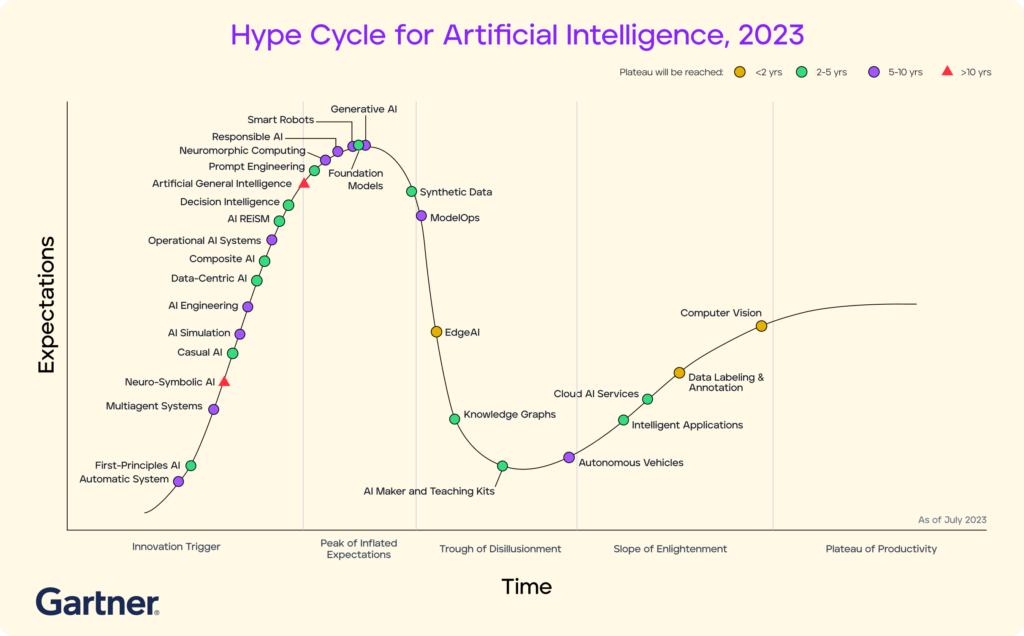
- Responsible AI and AI Trust, Risk, and Security Management (AI TRiSM):
Responsible AI focuses on ethical AI development and operation. It is essential for organizations to adopt AI TRiSM practices, ensuring governance, trustworthiness, fairness, reliability, robustness, efficacy, and data protection in AI models. This involves setting clear guidelines for AI use, ensuring AI decisions are transparent and explainable, and safeguarding sensitive data used by AI systems. - Causal AI in Procurement:
Moving beyond correlation-based predictive models, causal AI identifies cause-and-effect relationships, enabling more effective prescribing of actions and autonomous operation of AI systems. In procurement, this means AI can not only predict trends but also suggest proactive strategies based on underlying causal factors, such as market dynamics or supply chain disruptions. - First-Principles AI (FPAI):
FPAI, also known as physics-informed AI, integrates physical principles, governing laws, and domain knowledge into AI models. This approach extends AI engineering to encompass complex system engineering, providing deeper insights and more accurate models for procurement decision-making. FPAI can enhance the understanding of supply chain dynamics, material sourcing, and logistic challenges. - Perspectives on Artificial General Intelligence (AGI):
While AGI remains a hypothetical concept, it’s an intriguing prospect for the future of AI. AGI would enable machines to perform any intellectual task that a human can, potentially revolutionizing procurement processes. However, the path to AGI is filled with technical, ethical, and organizational challenges. It’s important for procurement leaders to stay informed about AGI developments while focusing on practical and responsible applications of current AI technologies.
Implementing responsible AI practices, focusing on advanced AI concepts like AI TRiSM, causal AI, and FPAI, and staying informed about AGI are critical steps in ensuring AI’s reliability and effectiveness in procurement. These measures not only mitigate risks but also enhance the strategic value of AI, enabling procurement organizations to make more informed, ethical, and effective decisions. By embracing these advanced concepts and responsible practices, procurement can leverage AI to its fullest potential while maintaining alignment with organizational values and ethical standards.
Critical Questions for CPOs: Navigating GenAI in Procurement
For Chief Procurement Officers (CPOs) integrating Generative AI (GenAI) into procurement processes, thoughtful consideration and strategic questioning are crucial. This chapter outlines key questions and considerations CPOs should address when evaluating GenAI solutions.
Key Questions for CPOs on GenAI Solutions:
- What specific challenges or opportunities do we aim to address with GenAI? Identifying the primary goals for GenAI implementation, such as efficiency enhancement, cost reduction, supplier relationship improvement, or market trend anticipation.
- How will GenAI integrate with our existing procurement systems and workflows? Assessing compatibility and integration capabilities is essential for a smooth transition and maximized benefits.
- What data is needed to effectively train and operate GenAI systems? Ensuring access to quality data is crucial for the success of AI implementations.
- What are the anticipated ROI, Cost vs TCO, and TVO? Beyond ROI, understanding the total cost of ownership (TCO) and total value of ownership (TVO) provides a comprehensive view of financial impacts.
- How will GenAI affect our procurement workforce? Evaluating potential changes in workforce dynamics and skill requirements is necessary for successful integration.
- What ethical considerations and risks does GenAI entail? Addressing ethical implications, including AI biases, data privacy, and system transparency.
- How will the success and effectiveness of GenAI in procurement be measured? Establishing clear metrics and KPIs is vital for ongoing evaluation and alignment with business goals.
- What is our strategy for scaling and evolving GenAI solutions? Planning for the long-term adaptation and scalability of GenAI is key for enduring success.
- How does GenAI influence our time to market? Understanding the impact of GenAI on the speed and responsiveness of procurement processes in market-related decisions.
Implementation, Integration, ROI, Ethics, and Time to Market:
- Implementation: Develop a realistic, structured implementation plan that minimizes operational disruption.
- Integration: Ensure technical and cultural integration of GenAI within the organization.
- ROI, TCO, and TVO: Conduct a thorough analysis that includes both tangible and intangible benefits, such as cost savings, improved supplier relationships, and decision-making capabilities.
- Ethics: Uphold ethical AI practices, aligning with organizational values and regulatory standards.
- Time to Market: Evaluate how GenAI influences the organization’s agility and responsiveness in market-related decisions and strategies
By addressing these questions and considerations, CPOs can effectively navigate the implementation and integration of GenAI in procurement, ensuring alignment with organizational goals and ethical standards. This strategic approach is crucial for the responsible and effective adoption of this transformative technology.
Conclusion: Embracing the Future of Procurement with Generative AI
As we stand at the forefront of a procurement revolution, fueled by the rapid advancements in generative AI, we are poised to witness a paradigm shift in how procurement functions and strategies are conceptualized and executed. This future, rich with potential, also beckons us to tread with foresight and responsibility.
Generative AI, in its essence, is not just a tool but a harbinger of transformation. It promises a future where procurement transcends traditional boundaries, driven by intelligent algorithms capable of predictive insights and strategic foresight. As Gartner predicts, by 2025, the sustainable and ethical use of AI will be a top concern for 70% of enterprises, underscoring the impending need for a balance between innovation and responsible AI usage.
Navigating the Balance: Innovation and Ethics:
The pursuit of innovation in GenAI must be harmoniously balanced with ethical considerations. This balance is not just a necessity but a strategic imperative. As organizations prepare to integrate GenAI more deeply into their procurement processes, the appointment of a chief AI officer, as predicted to be prevalent in 35% of large organizations by 2025, will become crucial. This role symbolizes the commitment to steering GenAI applications towards ethical, transparent, and sustainable practices.
The transformative potential of GenAI in procurement is boundless. It is poised to redefine operational efficiency, elevate decision-making processes, and unlock new avenues for cost savings and strategic partnerships. However, this transformation must be navigated with a keen sense of responsibility and a commitment to ethical AI practices.
Productive Experimentation and Long-Term Strategic Vision:
The path forward calls for productive experimentation with GenAI use cases, coupled with a long-term strategic vision. Organizations must understand how GenAI can be woven into the fabric of their existing and future business models, ensuring that its integration drives value and aligns with broader organizational objectives.
As we embrace this new era, the emphasis must be on adopting GenAI in a manner that is not only forward-thinking but also deeply responsible. This approach involves leveraging GenAI’s capabilities to enhance procurement functions while ensuring that its applications are aligned with the core values of transparency, ethics, and sustainability.
In conclusion, as GenAI reshapes procurement, our goal is clear: leverage this technology to enhance efficiency, spur innovation, and foster sustainable practices. This journey isn’t just about improving the bottom line; it’s about making impactful decisions that resonate with societal and ethical values. Let’s embrace this future, using GenAI wisely to create a legacy that balances groundbreaking innovation with responsibility and long-lasting value.


